Two years ago on the Fourth of July, Alfonso Gonzalez Jr. decided to make a change. After six years of painting hand-painted billboards on walls throughout the US, from a hundred feet in the air under the scorching sun to streetside in the frigid cold, Gonzalez had enough. He had developed a skillful understanding of paint and how to paint while working alongside people who have been sign-painting for over forty years, and also had been given several opportunities (2 years worth) to travel and paint, but painting Spotify and Justin Beiber ads on the side of buildings became monotonous. Gonzalez wanted for more and inevitably left a sign painting job he had always dreamed of having to explore a newly invigorated artistic practice.
The day that I go over to Gonzalez’s studio, marks the two-year anniversary since his decision to seriously pursue his art. Gonzalez has been making artwork his whole life—as a 12-year old writing graffiti, in his high school years drawing and snapping photos, and in his twenties as a sign painter—but without ever thinking it was art. Now, the Los Angeles-based artist sees things quite differently. His work takes overlooked expressions of art— hand-painted signs, local ads, sign postings—found in his surrounding East Los Angeles neighborhood and San Gabriel Valley stomping grounds, and incorporates them in large, layered, and masterfully textured paintings that depict narratives and a localized perception of his hometown. Drawing on his experiences with commercial sign painting, advertisement, graffiti, and classical painting, as well as his own familial history of labor and image-making, Gonzalez has no trouble finding the beauty, in what many regard, the mundane or every day.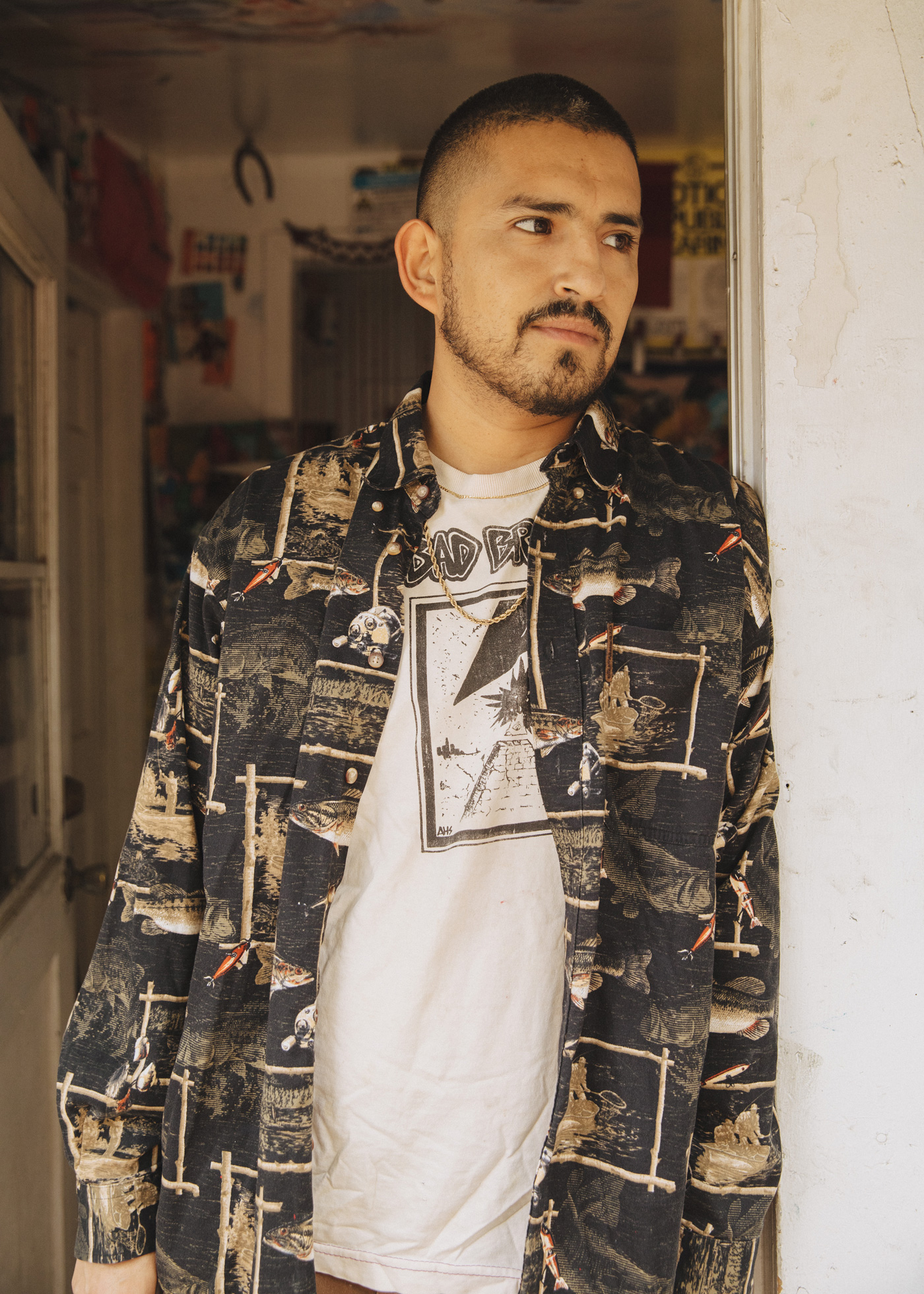
You paint murals for a living, right? How did you get into that?
My dad is a sign painter by trade since before I was born so I’ve always been around commercial sign painting. I’ve also always have made artwork. I’ve been drawing since I could remember and started making artwork in high school. After high school, I didn’t really have the option to go to art school; I had really bad grades and couldn’t afford it. I decided to go to LA Trade Tech College, did a sign graphics course there and started painting signs. I then moved to San Francisco and that was the only time I did like a non-creative job. It really sucked and I felt like people didn’t value my time and me and started to think I was stupid. I hated that feeling because it wasn’t something that I was passionate about. I eventually quit my jobs and I tried to pursue painting, or at least commercial painting, to make a living and I couldn’t really do it. I didn’t have the chops yet.
Quitting your job to pursue your passion takes a lot of hustle.
Yeah, one of my friends that I was going to school with, got a job as an apprentice at a sign painting company based out of Seal Beach called Wall Dogs. He was working with them and they started to get really busy and he knew that I was able to paint letters and understood paint and was just down to work so he brought me on. It was mostly prep work—painting walls white, carrying paint up walls and just all the stuff that’s not fun. Basically, I had no understanding of painting besides lettering. But just being around people who had been doing this for up to forty years and assisting them, building relationships with them, and watching them paint, especially at such a large scale, allowed me to understand paint and how to paint. Prior to this job I never had an interest in photo-realism because that’s not really the artwork that I like. But I feel like understanding that allows you to kind of explore anything you want to say. So if you’re able to reproduce anything then you can also creatively make anything.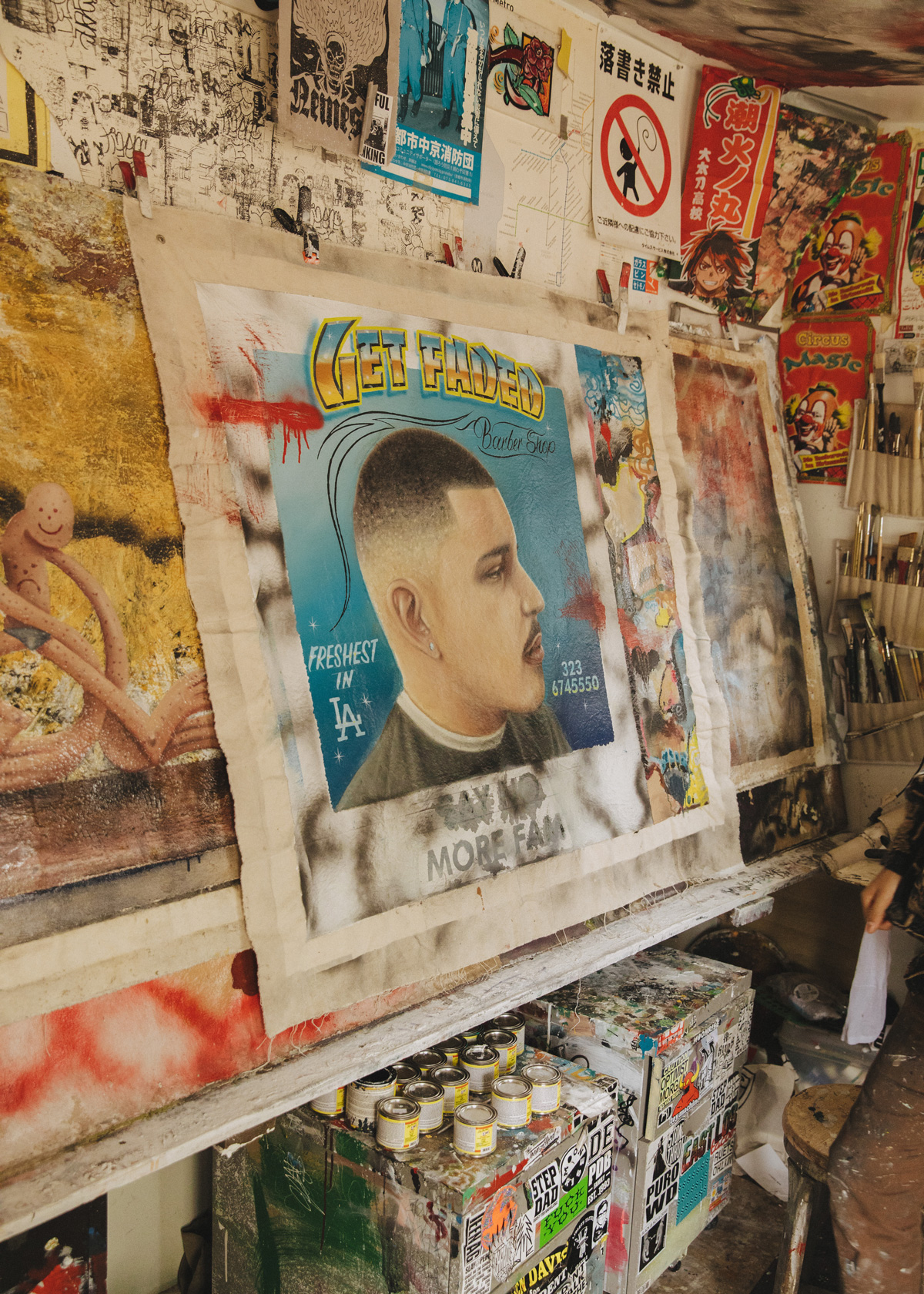
That makes sense.
I also grew up painting graffiti, since I was seven years old, and heavily since I was twelve years old. Painting on the streets and traveling to paint, that sort of energy and approach is a big influence on me and my work until this day. I’ve always been interested in traveling and as I got older I was able to build friendships and relationships throughout the United States and have been able to visit them. I went to Europe a few years ago and got to check out museums and then I started working with a company based out of New York so I got to check out all the major museums in New York. I was interested in seeing what was in these museums and the differences between what people show in a museum as opposed to a gallery space or a museum in Europe. I didn’t study art or art history so exploring these places was like a new world to me. Graffiti-wise or commercial sign painting-wise, I felt like I already understood and achieved personal goals and it got boring so discovering “art” was like a whole new thing that was really fascinating.
It was like a different language but in the same medium that you’re familiar with.
Yeah, and it was a little more intimidating. There was art that I really liked and there was art that I didn’t understand and still, to this day, don’t understand, like reading about why people make weird conceptual pieces. Or why some seemingly very basic work is important and then understanding that the time and the place that it was created is what makes the work important. If you see an Andy Warhol now, most people are unphased, it’s like the world is oversaturated with that sort of work. But imagine seeing that work at the time he was making it, for the first time; it was ground-breaking because of the place and time. It was around this time that I started trying to make my own work. I was so busy traveling for work—I would be home three days a month sometimes—that it made it difficult to get into a groove with my personal work. 
The work that you were doing at this time was primarily sign painting and large-scale outdoor murals at that point, right?
Yeah, hand-painted billboards.
Those massive painted outdoor advertisements.
I really dislike advertisements. Although I incorporate it into my work, I feel like it’s a form of controlling the masses and brainwash. When you’re out there painting every single day and you’re painting a Spotify ad or some Justin Bieber bullshit, it just kind of sucks. Sometimes people will walk by and be like, “Why are you painting in our neighborhood? Why are you painting this ad on our neighborhood wall?” And I would just be embarrassed. It was this weird personal frustration. I’ve always been a person that kind of does what they want. I’ve always tried to make that a point in my life to try and just live the way I want to live and I felt like after doing that job I wasn’t. I had no control. I think you need a good balance; you need to put in a lot of hours and be uncomfortable to master something. I did that for a long time. Four years with one company and two years with another company and for two of those years I was constantly on the road. After a while, you’re not really even being yourself, or like living your life for yourself.
You start to wonder how long you can continue down that path.
So I started making work towards the end of working with that company based out of New York.
How old do you think you were at that time?
This was like two years ago so, 27.
Are you 30 now?
I’m 30 in August.
I’m 30 in two weeks.
Congratulations!
We made it.
I’m there with you. It’s like… I feel like I’m still in my 20s you know?
I feel like I’m 23! I feel like I behave that way too. What was that first painting that you made?
What was it? It wasn’t anything.
It was an abstract piece?
It was an abstract piece. The second painting I made I was really interested in working with texture, but also incorporating photo-realism. I wanted to kind of see what I could do while referencing photos because that’s basically what I was doing at work. I’ve always taken photos and have been interested in documenting, which I realize is a huge part of my practice. I made some paintings based off of older photo references I had taken. Then I made a large one, it was eight by six feet and it took me a year because I was always out of town, and when I‘d come home I’d have to do all kinds of other stuff, and sometimes would only get to work on it for an hour. That was really frustrating—leaving and coming back and only being able to do a little bit.
That’s difficult, trying to jump into a piece that you haven’t seen in 3 weeks and then maybe getting into a little bit of a flow and then being like “Oh I gotta leave.”
For the first year of creating personal work, I didn’t give a fuck about anything else. When I got home from traveling for work it was basically a balance of making this painting and then hanging out with the people I love here at home. I was working for a media/mural company here in LA and I randomly tuned in to one of the company’s Slack channels and found this video that someone posted in a public channel. It was basically a video of this tech self-help guy, that was talking to CEOs of companies at some conference about how to keep your employees in check. Not in those words, but basically along those lines. I had never really watched anything like that, and thought it was kind of interesting you know? I realized you could apply this to anything. I started clicking on other videos and eventually got into watching or listening to videos about how to show in museums, interviews with people that run huge companies, and talking about how to self-start. I basically started listening to different people talk about all kinds of shit. I started thinking about what I was doing and thinking it was my dream and goal to work for a company like the one I was working for, but then I realized it was extremely unhealthy and I wasn’t fulfilled in my relationships anymore. So I decided to quit on the Fourth of July. 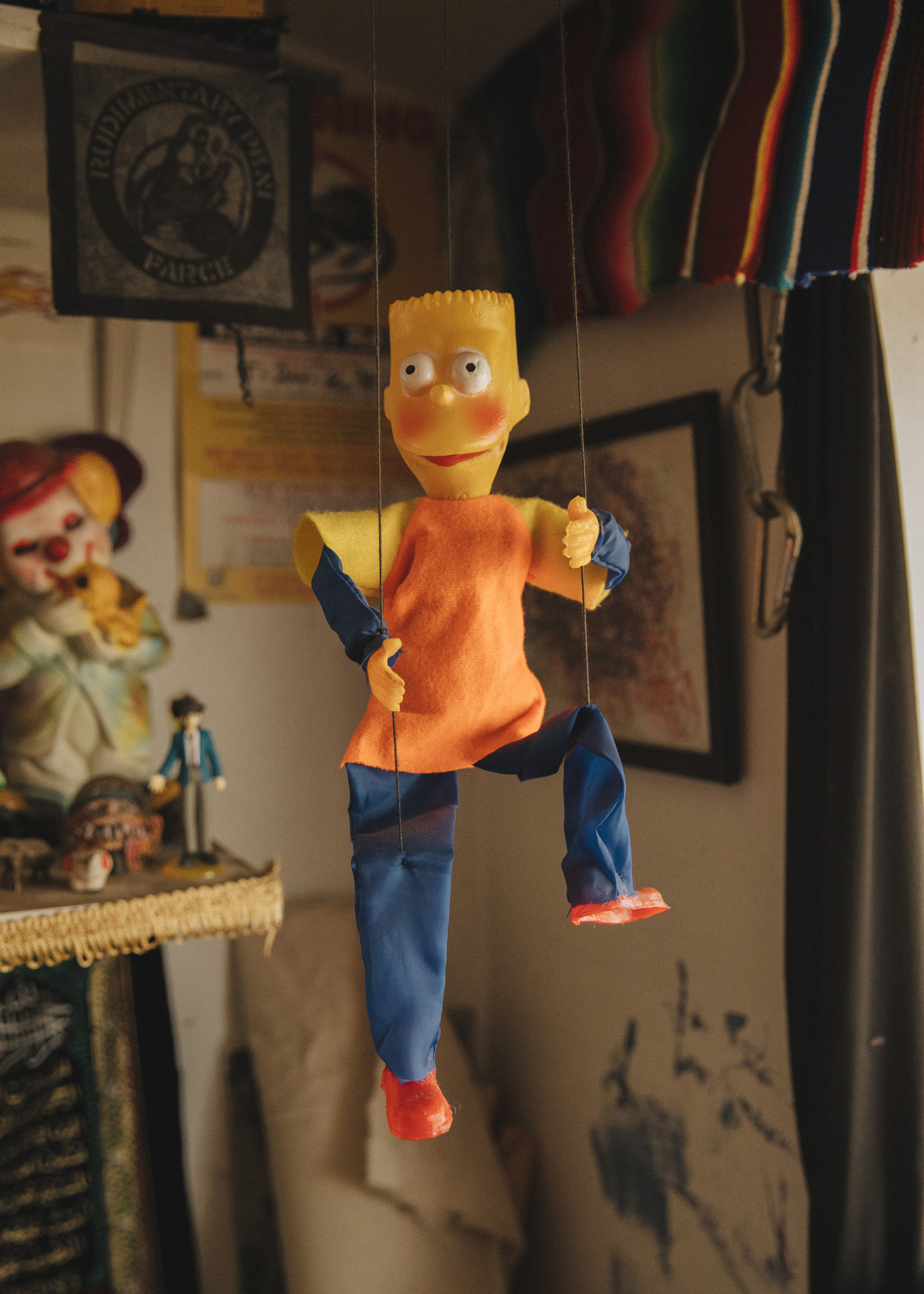
So you made a change.
I made a change. It was scary. I didn’t have a job, but I knew I could work with other companies or even my friend who I’m working with now. This sort of work is weird, there’s only so much work and most companies have their team. Luckily someone got another job and I was able to slide in and now anytime there’s work I say yes. Even if I’m tired or if I don’t want to work, I just have to say yes.
Because if you say no, then there’s another person that was like you and will slide in and they might just start calling him instead.
Yeah, people who know me know what I do, but I was really hesitant to put it out there and I still kind of don’t. Once in awhile, I’ll post something about the work I do, but the whole commercial versus high or fine art is a weird thing.
You don’t want to get pigeon-holed. People love putting other people into categories. And just because you grew up doing graffiti and painting on the streets does not mean that you’re a street artist or only a graffiti artist. That and the work you’re making now are different things, but they also are very integral to each other.
Yeah, they definitely inform each other. I’ve always done my own thing. When I was working in that job I realized a lot of the people I was working with hated artists, mostly because they had given up on their dreams of being an artist. Basically anytime anything about art came up, they would be like, “Oh that shit sucks,” or “Oh that’s lame,” or “That’s some pussy shit.” Same thing with graffiti writers. As much as people think that it’s similar to art, it’s really not. Not in certain people’s perspectives. So I would almost hide my interests and then I realized I was doing that and I was like “Why, fuck you guys,” you know? Then when I started putting my stuff out there people were like, “Oh, you’re an artist now?” People still give me that shit and I don’t give a fuck because I don’t ask anyone for anything. I don’t give a fuck about your opinion, I still do my shit. I’m the same person but also very different. What’s the point of working hard if you just want to be the same person? I want to be better. Being better requires me to be the real me, and the real me is someone who likes to go to museums and look at art.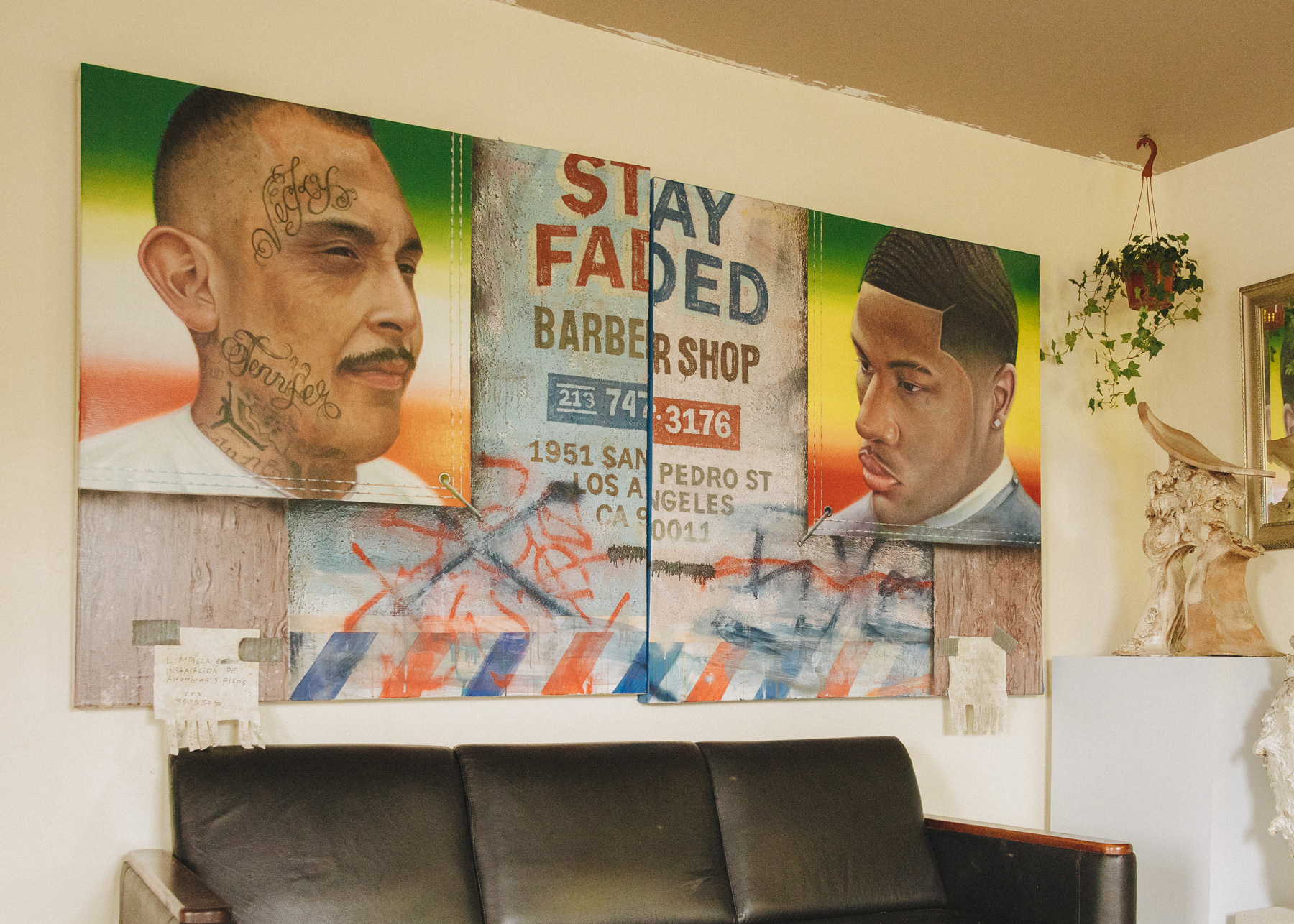
Yeah and there’s nothing wrong with that.
Yeah, but it’s so weird.
You can’t win with everyone though.
Exactly.
And that’s the thing, you’re going to get people talking shit no matter what you do.
That’s exactly what I realized.
Everyone has an opinion and it’s up to you to decide whether or not you want to listen to them. You’ve gotten to the point where you’ve decided you’re not going to listen to that shit.
I don’t listen to it and I’m so happy. Sometimes it takes years and people are like, “Aw yeah you’re killing it,” and I mean yes I do things and I’ve done things, but I’m going to do a lot more hopefully.
One thing that I’ve picked up on from our conversation is that you’re kind of hard on yourself, but mostly you’re really willing to push yourself. Where do you think that comes from?
Early on, I saw my dad always working hard. He never stops either. He’s a little older now, but he’s always working. When I would get in trouble in school—get suspended or something, I got suspended a lot—he’d take me to work with him and I remember thinking it was so fucking hot, and that we had to wake up so early. But I really got a sense of his work ethic. No complaining, he would just get his shit done.
No complaining, he would just get his shit done.
I definitely try to make it a point to push myself. I’ve been a lazy fucking slob in the past and it makes me feel. I don’t like feeling like shit.
Let’s talk a little about the work. You mentioned earlier, the idea of documenting and I feel documentation is apparent throughout your work. Your paintings serve as documentation of the things that surround you in your environment and that you interact with almost every day. Do you see your work as a form of documentation?
Yeah, I’ve always taken photos. Around 2002 when I was painting graffiti or walking around down by the LA river when it was the way it used to be, I would steal a disposable camera and take photos while I walked around. That was my way of documenting what I was making at the time and also documenting my heroes who were painting on the streets. I didn’t even think of it as art. I think I always made art without thinking it was art. It was just something I did. One thing I have been documenting for a long time are those photo walls in liquor stores of all the people who have stolen something from that store. I don’t know why, but it was just something I was always drawn towards. I have really old photos of that stuff and then just walls that I would pass by, like if there was a fire in an alley and it burnt one of the surrounding walls and made this texture. I would always photograph that sort of stuff too.
Nowadays I take a million photos a day on my phone and I always carry around a point and shoot. I was always good at drawing, but I was never the person who could just straight up copy an image something. A lot of times like we think that we’re incapable of doing something, but then you realize it’s basically just about confidence and finding the right formula for things. I knew I didn’t want to paint someone else’s photos so I started painting my photos. Things that I thought would work well. At first, the work felt really cliche and too serious. Then I tried incorporating more cartoony sorts of work, but that didn’t work out well either. And what I have come to is incorporating abstract elements, some photorealistic elements, and some zoomed-in landscapes. I realized it’s all rooted in realism, even the abstract stuff. I’m not referencing the abstract expressionist movement. It’s more of what really goes on in my neighborhood or the places that I exist. It’s the mundane sort of stuff you see every day and finding the art in that. Sometimes I would feel out of place walking into a museum because I couldn’t and sometimes still can’t relate to the work. But I think when it comes to the side of a barbershop or something inside a liquor store or something that a lot of us have seen, it’s basically showing that there’s art everywhere if you look at it from this perspective.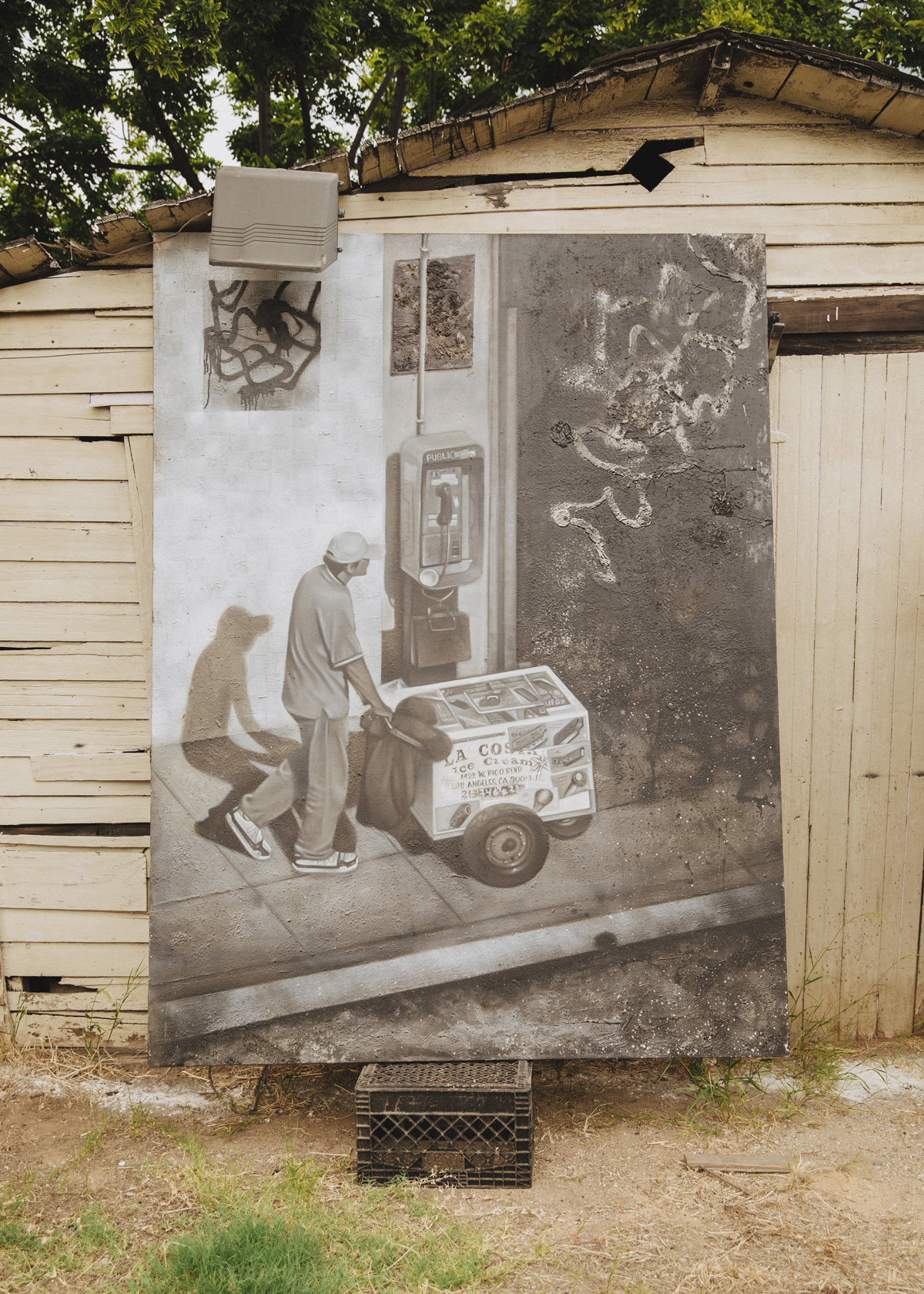
That’s some of my favorite type of art—seeing old signs on the sides of barbershops, party stores, or the hand-lettering of a liquor store sign. I remember always being drawn to the hand-painted signage.
Yeah totally, and even the imperfections in it, it’s the human hand. Sometimes I have photos of things that I realize I want to use later and sometimes there’s an idea that I have, like the liquor store photo wall, and I go out looking for it. For the piece that incorporates that liquor store photo wall, I literally drove down Atlantic and every time I saw a liquor store I would pull over and go in there and look around.
Sometimes you’re hunting for something, sometimes you just stumble upon your next subject.
Yeah, and going back to what I was saying about everyday things being art, what’s the difference between a Jeff Koontz sculpture in a museum and those sculptures that you see at a muffler shop where the owner has welded the mufflers together to create a 6-foot standing figure that welcomes you in.
Ahh yes, those are amazing sculptures.
Yeah, and the people making them are just doing it in their downtime. It’s basically an advertisement, but they create an amazing work of art you know. And the liquor store photo wall is basically a photo installation, an unintentional photo installation. Take for instance the wall of a store building. It’s like a canvas; people walk up and post their mini advertisements for house cleaning or a missing dog, and the business owner paints the wall blue, and then someone comes and tags on it and the business owner tries to wipe it off and then someone crosses it out and it’s basically creating these abstract gestures and elements but they don’t even know who the fuck Jackson Pollack is, you know? That’s fucking amazing. Incorporating elements like this in pieces, it’s something that my neighbors or my family members could walk into a space and maybe they can’t understand why it’s in a museum or why I painted it, but they’ll at least know what it is instead of just trying to access some weird cube in a corner. Which can be cool don’t get me wrong, but for me to try to make that is not authentic, it’s not real.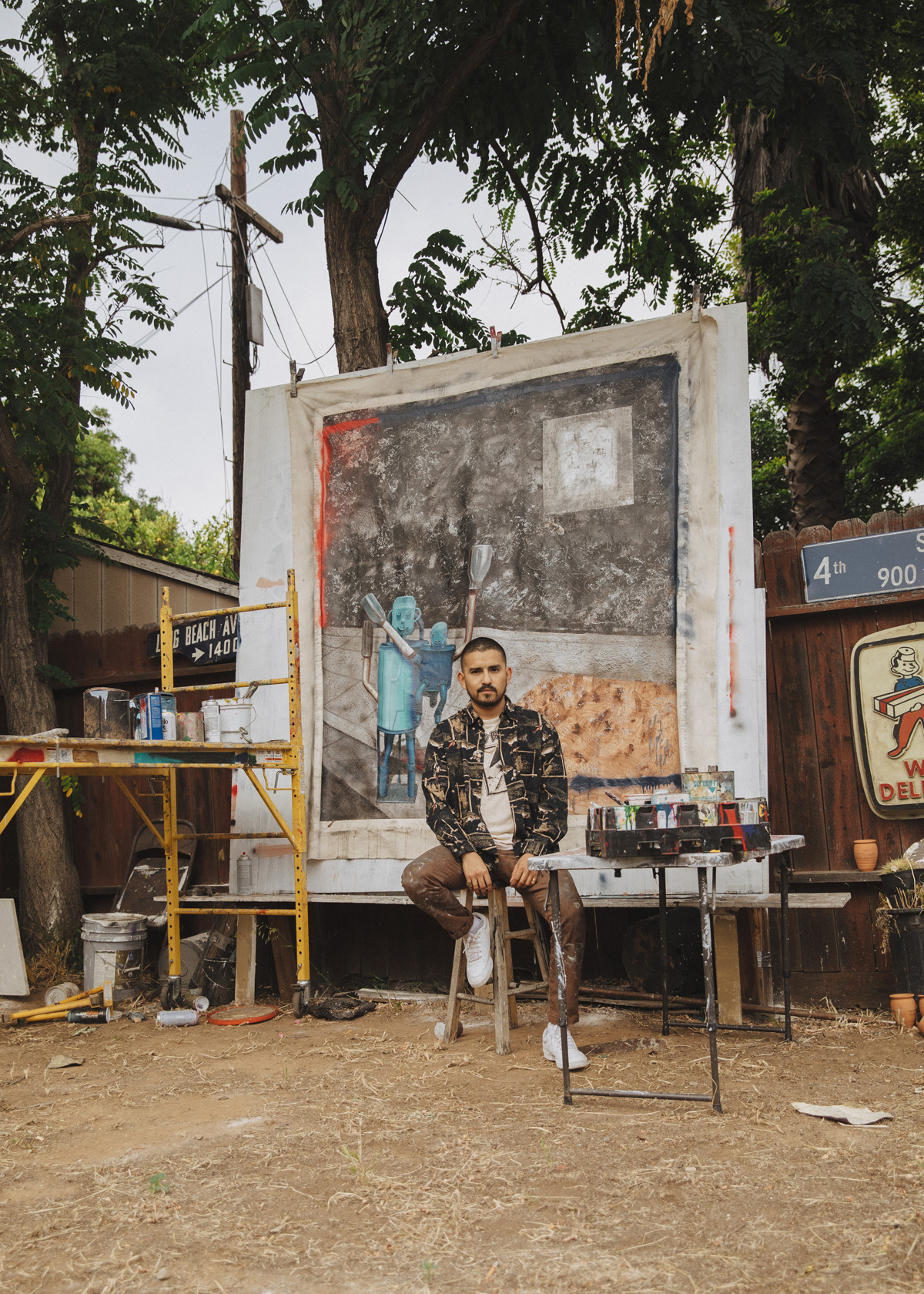
Do you hope your work will be in a museum one day?
That’s a goal. That’s something that I’m striving for. That’s something I have in mind. I haven’t had a solo show and I’ve had opportunities to, but I want to be completely comfortable with it, I want to be comfortable with the space, I want to be happy with the work. I’m not gonna things or force them. I don’t make my work to make money. I think you can follow a certain formula to be a successfully selling artist, that I could probably follow, but I don’t care about that.
That’s not authentic to who you are.
Yeah, I don’t care if these sell or not. I basically participate in group shows that my friends put together in spaces that I’m comfortable with.
Seems like thus far, you have chartered the right path for yourself and have had done things at your own pace.
If I would have gone to art school straight out of high school I think it would have been making garbage work. But not going to art school was a big insecurity. I constantly asked myself What am I doing? Am I doing this right? And just generally dealt with knowing that historically art school has been the path to an art career, and I’m not going that path. I dealt with the insecurity of not being taken seriously. Now that’s gone. But without my early experiences after high school, working and just living, I probably wouldn’t be where I am now.
Do you see yourself as a multidisciplinary artist?
That’s what I want to see myself as. I feel like yes, I primarily make paintings, but I definitely want to make sculptures and video and recently I have been putting out photos. I’m interested in making installations and changing a space. And try to engage as many senses as I can.
For more from Alfonso Gonzalez Jr., follow him on Instagram.
Photography by Brian Overend.
